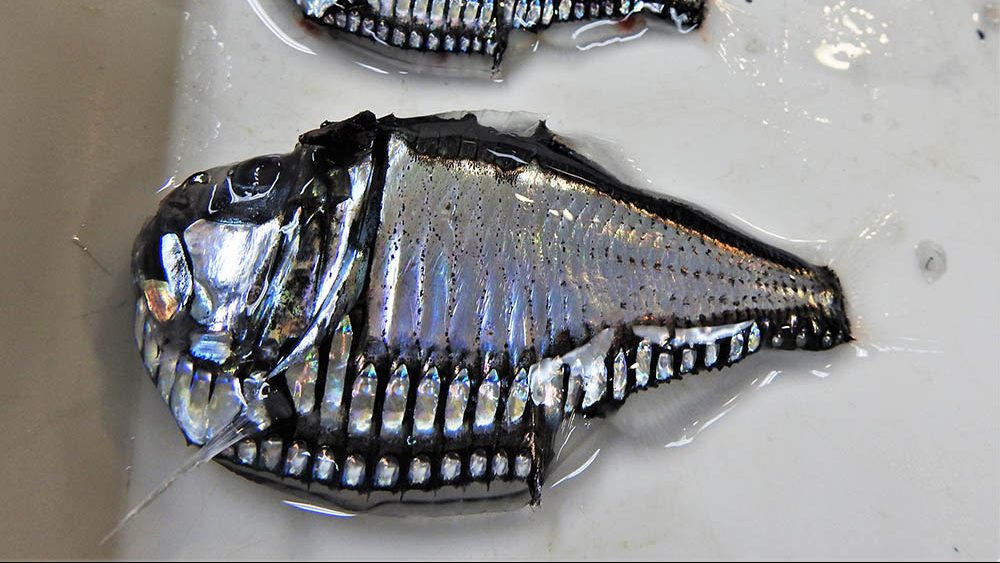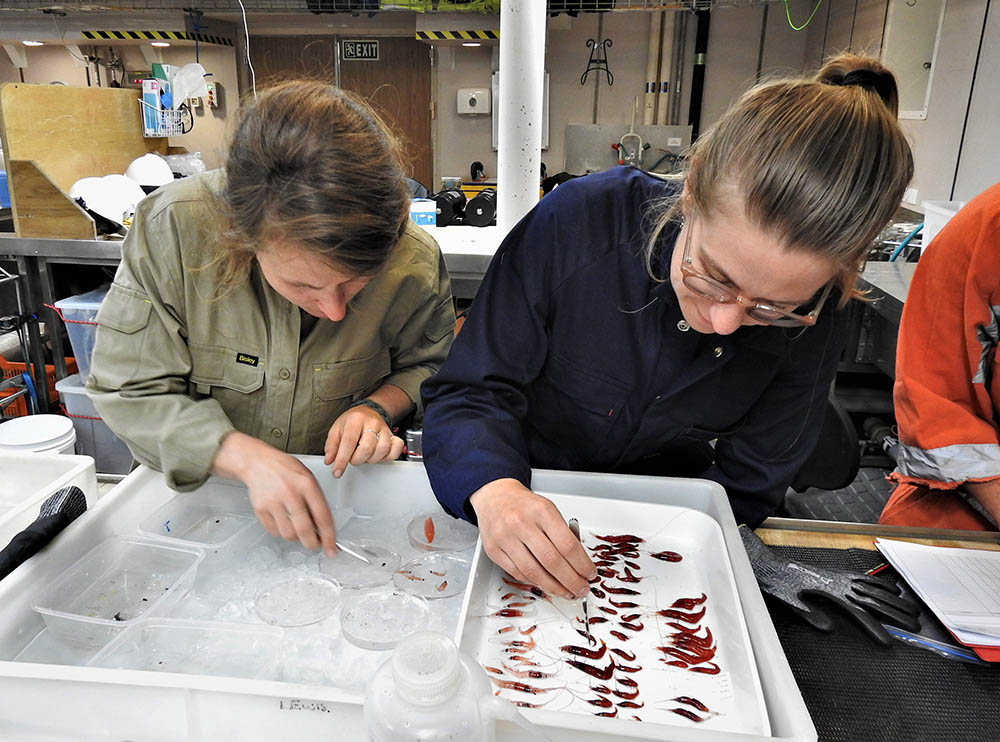Transporting carbon: Why micronekton are important

Bree Woods
PhD Student

The deep ocean is the largest habitat on earth and despite harsh environmental conditions, is full of life. The animals that live here are adapted to high pressure, low temperatures, and little-to-no sunlight. Such animals, which are collectively named micronekton, include fishes, squids and hard-bodied organisms known as crustaceans.

One of their most important adaptations is their daily migration. Micronekton hide from their predators in the deep dark ocean during the daylight hours. Then, under the cover of darkness they migrate to shallower waters for their evening meal in possibly the largest animal migration on earth.
The food they consume contains carbon that has been captured from the atmosphere by microscopic algae. Micronekton transport and release this carbon in the form of poo into the deep ocean and there it remains for thousands of years. Scientists are now recognising the significance of this migration for climate regulation.
Here, on the SOLACE voyage, we will be taking samples from the deep in the Southern Ocean to increase our understanding of how micronekton help to store atmospheric carbon. We will be using a rectangular mid-water trawl net that can open and close remotely, allowing us to sample discrete depth intervals.
On the fourth day of the voyage on RV Investigator, we deployed the RMT net and took our first sample from a depth of between 400 and 600 metres.

In the laboratory we sorted the catch and identified some individuals to species level. We found that we had caught the usual suspects, including the very interesting looking hatchetfish. One distinctive feature of the Hhtchetfish is the presence of light organs on their body which are thought to play a role in misleading predators and communication between other Hatchetfish. The hatchetfish is just one of the many interesting species we hope to find in the depths on our journey to understanding the role of micronekton in carbon storage.



